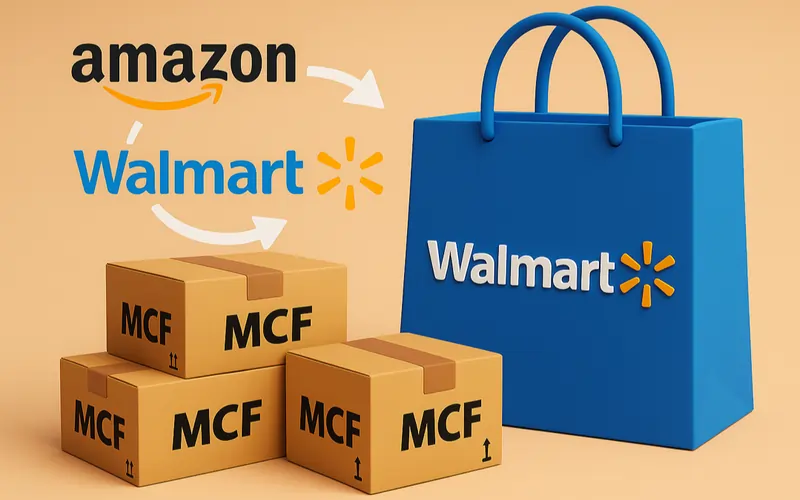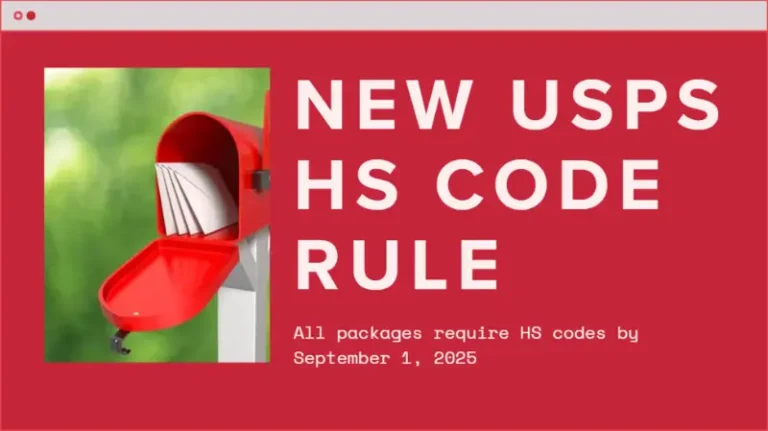Walmart Officially Allows Amazon Multi-Channel Fulfillment (MCF)

Last updated on June 09, 2025

In this article
 3 minutes
3 minutes
Big news for multichannel sellers: Walmart now officially allows Amazon Multi-Channel Fulfillment (MCF). Yes, you read that right. The retail giant has updated its policies, enabling sellers to use Amazon’s fulfillment network for Walmart orders, provided specific conditions are met.
What’s Changed?
Previously, Walmart prohibited the use of Amazon MCF for order fulfillment. However, as of May 15, 2025, Walmart’s updated Shipping & Fulfillment policy states:
“You may use Multi-Channel Fulfillment as long as you ship in neutral packaging using unbranded delivery vehicles, which means neither can display any logos, trademarks, or branding of the other retailer.”
This policy shift allows sellers to leverage Amazon’s robust fulfillment network to process Walmart orders, provided they adhere to the neutral packaging and carrier requirements (they don’t want Amazon logos on packaging, tape, trucks, driver uniforms, etc.).
Why Now?
Walmart’s decision reflects the evolving landscape of ecommerce, where flexibility and efficiency are paramount. By permitting Amazon MCF, Walmart acknowledges the need for sellers to streamline operations across multiple platforms. This move aligns with broader trends in retail logistics, emphasizing interoperability and seller convenience.
Slash Your Fulfillment Costs by Up to 30%
Cut shipping expenses by 30% and boost profit with Cahoot's AI-optimized fulfillment services and modern tech —no overheads and no humans required!
I'm Interested in Saving Time and MoneyWhat It Means for Sellers
Pro Tips for Sellers
1. Inventory Management: Maintain accurate inventory levels in Amazon’s fulfillment centers to prevent stockouts on Walmart orders.
2. Carrier Settings: Configure your Amazon MCF settings to block Amazon Logistics for Walmart orders, complying with Walmart’s delivery requirements.
3. Packaging Compliance: Ensure all shipments to Walmart customers are in neutral packaging, devoid of any Amazon branding.
4. Cost Analysis: Regularly assess the cost-effectiveness of using Amazon MCF for Walmart orders, considering the additional surcharges and fees.
5. Monitor Performance: Keep an eye on delivery times and customer feedback to ensure the fulfillment process meets Walmart’s standards.
Final Thoughts
Walmart’s policy update to allow Amazon MCF is a significant development for multichannel sellers. It offers an opportunity to streamline operations, reduce some overhead expenses, and enhance customer satisfaction with potentially faster delivery from distributed fulfillment. However, it’s crucial to navigate the associated requirements carefully to fully leverage the benefits of this new fulfillment option. And fulfillment costs will need to be monitored closely to make sure that it makes sense to use MCF. If not, it might make more sense to outsource Walmart fulfillment to another distributed fulfillment provider such as Cahoot.

Turn Returns Into New Revenue





